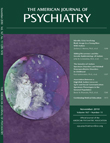Pescosolido and colleagues report on an interesting and informative study of public attitudes toward mental illness in this issue (
1). They are the preeminent group of investigators working with the General Social Survey, a repeated survey of social attitudes of cross-sections of the U.S. population. Their data provide an empirical analysis of public attitudes toward mental illness using well-designed vignettes as stimulus material. The investigators systematically vary the characters in the vignettes to control for a range of sociocultural and demographic characteristics that might influence attitudes. However, the abnormal behaviors depicted in the vignettes, which present individuals with behavioral features of mental disorders, are both the strength and the weakness of the study.
The investigation tests the hypothesis that between the two observational time points—1996 and 2006, when mental health supplements to the General Social Survey were administered-public attitudes changed to favor a more scientific understanding of mental illness and that this change in understanding in turn is associated with two changes in attitudes. One putative change in attitude, associated with a more scientific—particularly a more neurobiological—conception of mental illness, is an increase in recommendations from those surveyed that the individuals in the vignettes should seek treatment. The other putative change is a decline in social stigmatizing attitudes about the individuals in the vignettes, particularly among respondents who view the illness as a manifestation of a neurobio-logical abnormality. Consistent with this hypothesis, those who attribute the abnormal behaviors to mental illness and those who increasingly view mental disorders as neurobiological are now more likely to endorse a referral for treatment. Contrary to the hypothesis, however, those with a more neurobiological understanding are also more likely to endorse socially stigmatizing and distancing attitudes about the people represented in the vignettes.
A theory of stigma reduction that motivates many of the antistigma interventions is that changes in attitudes about mental illness favoring a scientific understanding of specific disorders increase help-seeking behavior and that increased help-seeking behavior will lead to treatment that will reduce distress and dysfunction, promote recovery, and secondarily reduce social stigmatization. The mechanism for reduced social stigma is secondary to the effect of treatment in reducing the signs and symptoms of mental illness, which people perceive as alien and threatening. Thus, the behaviors are the source of stigmatization, and treatment makes them less visible or eliminates them. This recovery after treatment is not represented in the General Social Survey study vignettes. The responses to the vignettes tell us how people feel about individuals with active mental illness—not how they would feel about the more relevant vignette of an individual who has recovered from a mental illness. Admittedly, it is difficult to assess attitudes about an individual who has recovered from mental illness, because that individual has little or none of the abnormal behaviors manifest in the illness. A vignette of a normally behaving person who professes a previous history of mental illness would be the proper stimulus to determine the social stigma associated with an individual who has been successfully treated for a mental disorder. Indeed, the authors point out in the paper's discussion that the 1999 U.S. Surgeon General's report cautioned that acceptance of neurobiological causation alone might cause a backlash of stigma if it were not coupled with successful treatment of mental illness.
Despite this limitation, the study does tell us about some important attitudes and moderators of public opinion. The authors offer a wise warning that neurobiological explanations might not be a panacea for reducing stigma, but they may overstate the likelihood that such an approach will be stigmatizing. Given that many mental illnesses are only partially treated with current psychopharmacological and psychological interventions, widespread acceptance of a neurobiological understanding of mental illness may nonetheless usefully encourage further research funding and more financial support of treatment, as in the enactment of mental health parity legislation. We may not have eliminated social stigmatization of symptomatic individuals with mental illness, but improved treatment has helped many of them to make their symptoms and dys-function less visible and less problematic. Perhaps accordingly, we have seen dramatic increases in research funding, more service use, and better insurance coverage for treatment of mental disorders.

